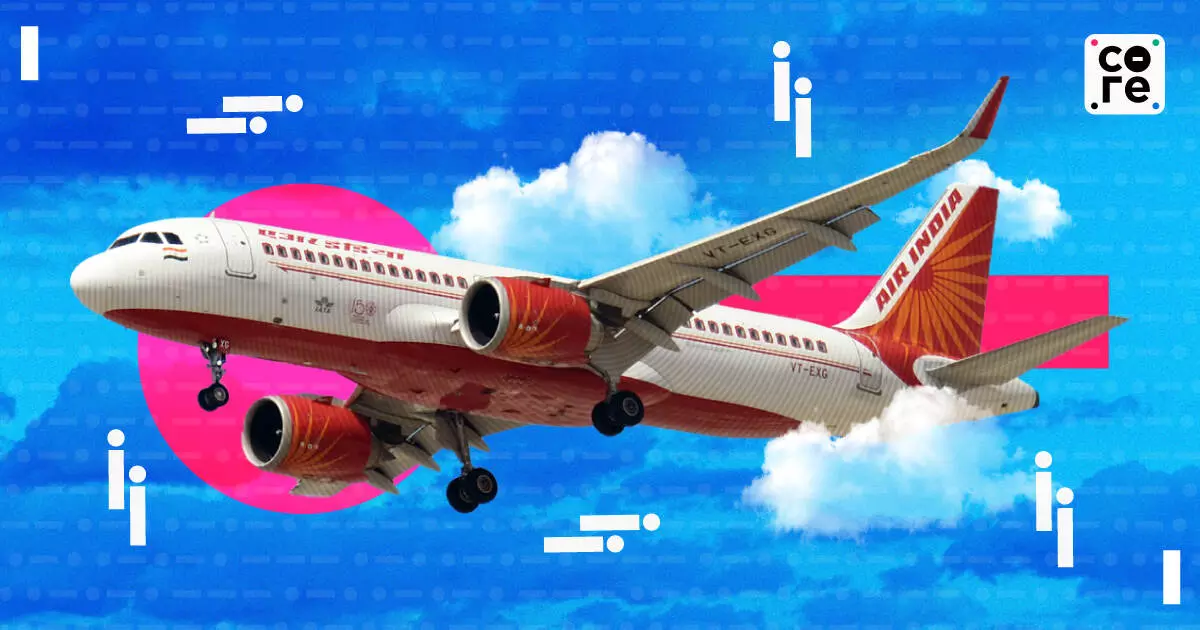
What Air India Isn’t Learning From JRD Tata
Air India's service still struggles despite the rebrand. What lessons can the airline take from JRD Tata?

Industrialist and aviator JRD Tata was known for his blue notes, summaries and observations when he flew Air India, the airline he founded in 1932. In 1951, he wrote in one such note that on an aircraft, VT-DAR en route to Europe and back, some of the seats reclined much more than the others. He suggested that all the seats be adjusted for a maximum reclining angle, except the rear seats limited by bulkheads.
In another note, he said the tea served on board from Geneva was, without exaggeration, indistinguishable in colour from coffee. “I do not know whether the black colour of the tea is due to the quality (of tea leaves) used or due to excessive brewing. I suggest that the Station Manager at Geneva be asked to look into the matter.”
Air India's journey in the next few decades is history book worthy. Air India ran accumulated losses of over Rs 70,000 crore and a debt of over Rs 60,000 crore when the airline was bought back by Tatas in January 2022 who were forced to sell it to the government in 1953.
A spate of recent viral videos and several social media outpourings about the cringe-worthy condition of Air India’s long-haul flights were a reminder that JRD Tata’s advice hadn’t been heeded at India’s national career. To be fair, Air India is furiously overhauling its aircraft and people, though it evidently faces challenges in both aspects.
Passengers say that the staff remain unhelpful or barely helpful and would rather wish away a problem and the person than resolve it. While this could be happening with other airlines too, there is no fair way to launch comparisons.
That there is a problem with Air India is clearer when it comes to the quality of interiors and inflight service. This is where JRD Tata would have surely stepped in. The abysmal condition of Air India flights was evident in a viral video posted by a passenger who paid over $6,000 for a one-way Delhi-Chicago first-class ticket. The interiors and seats were shabby and worn out, the inflight entertainment did not work and there was no wifi on this 15-hour flight. The passenger was apparently given a full refund. He was lucky. Many other passengers who have complained or borne this misery with silent grace have not sought for or got refunds.
Another passenger said she had to bear with a broken tray, reading lights continuously blinking and of course no entertainment system on a 16-hour flight from Mumbai to New York. “All this while Air India is charging the highest fare for this sector and charging for seats,” she said.
I had a similar experience though not first class on a JFK-Delhi flight on Air India two years ago where almost nothing worked and the seats groaned and protested. The cabin crew seemed to be mostly focussing their energies and smiles on a VIP on the flight. It is clear that some of these aircraft, particularly long haul, have been a problem for the Tatas for the past two years. I am assuming the previous management did not care.
Now, it would take a staggering amount of indifference and corporate blindness for the top brass to not have noted the state of the aircraft on their prime routes in their reviews or travels if they indeed chose to fly in their own airline as JRD Tata did. So the question is why did they not do anything about it?
The answers could be many. The most obvious is that demand in these sectors is so high that the airline would rather sell the seat at the highest price they are able to command. Of course a few passengers will turn out to be trigger-happy Instagrammers, but that is the price you can decide to pay.
In the worst-case scenario, the airline offers refunds, and for the rest, it is likely an apologetic Twitter message, perhaps even with sad and regretful emojis thrown in. This is where Air India has been quite evidently dishonest.
The airline could be clearly warning passengers on these sectors that their seats are a disaster and there is no inflight entertainment system worthy of speaking about or listening and service is a hit and miss. No airline will willingly do this.
But what it can do is offer at lower price points, especially for aircraft that are old and creaking, and provide as much comfort as a cramped bullock cart on an unpaved road. Many airlines including Emirates are offering unbundled business class fares where you pay less and get less: no lounge access, no chauffeur pickups and adjusted miles for instance. Air India could do that too for these aircraft.
This is a software fix, not a hardware fix. Perhaps if Air India’s top brass took a leaf out of JRD Tata’s book and travel on their own aircraft for 15 hours incognito, they may change their minds.
Air India's service still struggles despite the rebrand. What lessons can the airline take from JRD Tata?

